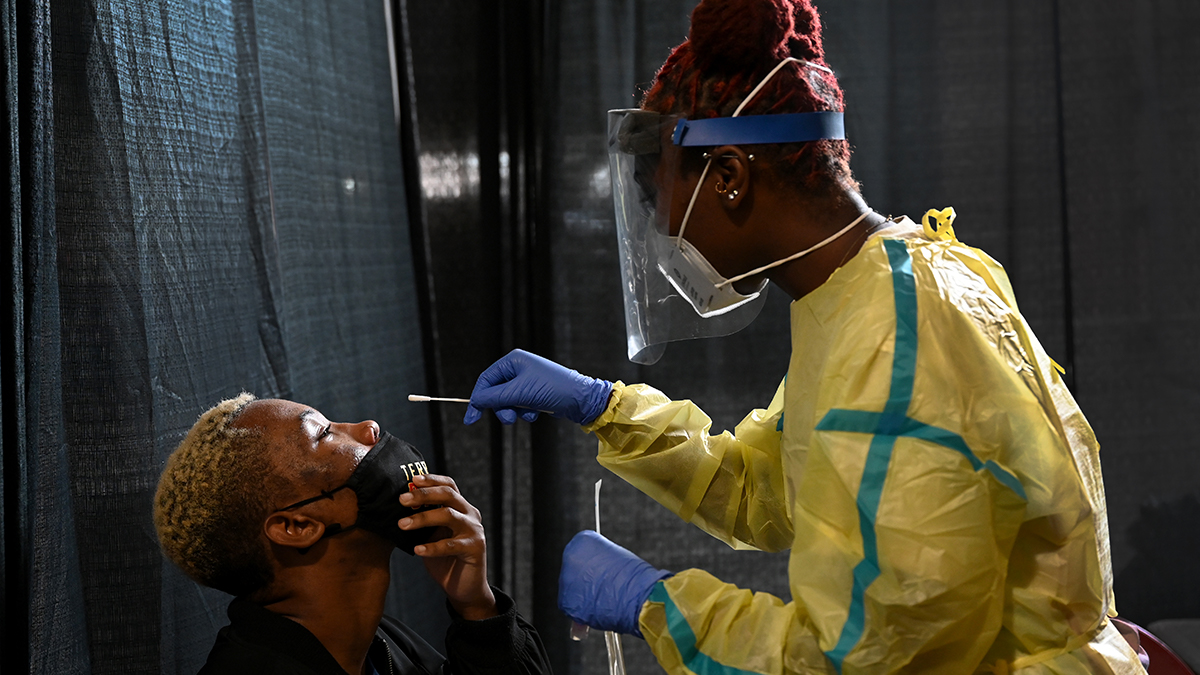The White House Coronavirus Task Force has its eyes on Virginia and D.C. as the greater region finds some success in beating back a surge of coronavirus infections.
But the numbers indicate significantly more people are catching the virus now than they were before each area entered their most recent phase of reopening.
Task Force leader Dr. Deborah Birx said that D.C. needs to "get on top of it" when it comes to small increases in the percentage of positive coronavirus tests, the Center for Public Integrity reports.
Trends in Virginia are "concerning," Birx reportedly said. But the hot spots in the commonwealth are outside Northern Virginia.
Virginia announced Wednesday another tool in their fight against coronavirus, called the Covidwise app. The voluntary app detects when someone who downloaded the app has spent time near another app user who later tests positive for the virus.
What the Data Shows
Why is the White House concerned with D.C. and Virginia?
Virginia is adding, on average, 957 new coronavirus cases every day. The data suggest that July's surge is waning, but the number of new cases added every day is much higher than it was at a nadir in late June.
For example, on June 21, the average was 486 new cases added. On Thursday, it was 957.
Hampton Roads is a persistent area of concern. The cumulative case count has more than doubled since July 13.
Only two cases were counted on Thursday, but 26 were added Wednesday and 33 on Tuesday. Tropical Storm Isaias may have impacted reporting.
Moving onto D.C.: Birx reportedly specifically called out increases in the positivity rate, which measures the proportion of coronavirus tests that come back showing a person is infected.
During the last week of July, positivity ticked up to 3.7-3.8%. By Thursday, it had fallen back to 3%.
But the average case number of new cases had ticked up, to 66. That's double from a low point of around 33 during the last week of June.
In Maryland, the number of average cases has fallen to 833 in Maryland, which is lower than its all-time peak of 1,090 and much higher than the low-point of 338.
The map below shows the number of coronavirus cases diagnosed per 1,000 residents.
Coronavirus Cases in DC, Maryland and Virginia
COVID-19 cases by population in D.C. and by county in Maryland and Virginia
Source: DC, MD and VA Health Departments
Credit: Anisa Holmes / NBC Washington
Local Coronavirus Headlines
- Virginia has rolled out a smartphone app to automatically notify people if they might have been exposed to the coronavirus, becoming the first U.S. state to use new pandemic technology created by Apple and Google. Read more.
- A group of frontline employees and union leaders at the Washington DC VA Medical Center said the agency is not ensuring workers potentially exposed to COVID-19 are given work leave to prevent the further spread of the virus. Read more.
- Several parents are suing for the right to send their children to private school in person in Montgomery County, Maryland. Read more.
- A new study from the University of Virginia estimates that very few Virginians have COVID-19 antibodies. Read more.
- Some dealers at MGM National Harbor say between positive coronavirus cases and quarantines, the casino is losing employees. Read more.
- Anyone who recently attended services at one Catholic church in D.C. is being advised to self-quarantine after the pastor, who criticized coronavirus-related restrictions, tested positive for the virus. Read more.
- American Airlines says a flight out of Virginia was delayed after a passenger refused to comply with its policy requiring a face mask. Read more.
Reopening Tracker
- Private and parochial schools in Maryland can choose when to reopen, the governor said Monday, after Montgomery County ordered all private schools to remain closed. Read more.
- Prince George's County is revising its phase two reopening executive order due to an uptick in coronavirus cases, according to the county executive's office.
- Virginia entered phase three reopening on July 1, loosening restrictions on restaurants, stores, gyms and pools. Northam said more restrictions could be implemented if cases continue to grow.
- Prince George's County entered full phase two on June 23, allowing the MGM Casino and gyms to reopen.
- D.C., entered phase two on June 22, allowing indoor dining, gyms, libraries and houses of worship to reopen with restrictions.
- Montgomery County entered phase two on June 19, reopening with restrictions gyms, houses of worship, indoor dining and retail.
- Maryland entered phase two of reopening on June 10, permitting indoor dining, outdoor pools and outside amusements to reopen.
How to Stay Safe
There are ways to lower your risk of catching coronavirus. Here are guidelines from the CDC:
- Wear a snug-fitting mask that covers your nose and mouth.
- Avoid being indoors with people who are not members of your household. The more people you are in contact with, the more likely you are to be exposed to COVID-19. If you are indoors with people you don’t live with, stay at least six feet apart and keep your mask on.
- Wash your hands often, especially after you have been in a public place.
Sophia Barnes, Andrea Swalec and Anisa Holmes contributed to this report



